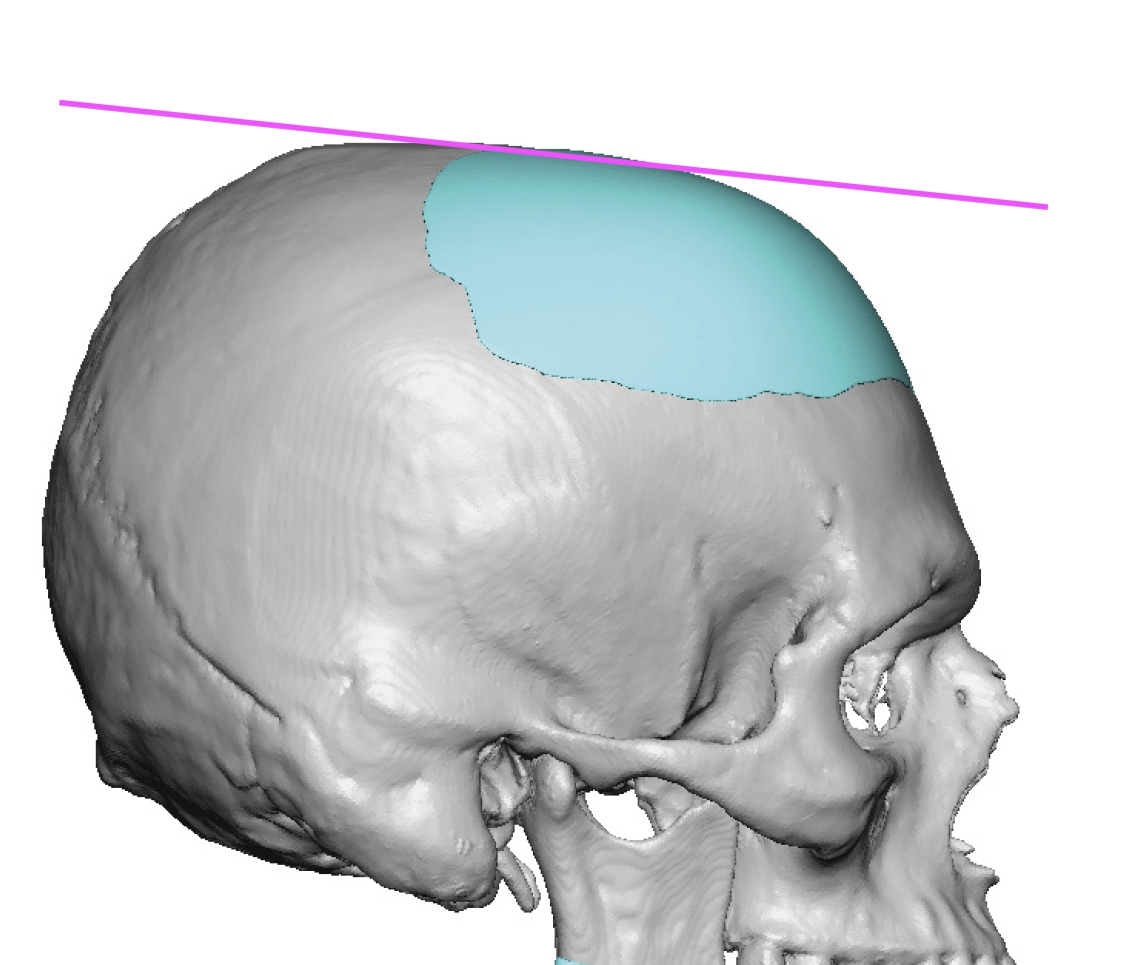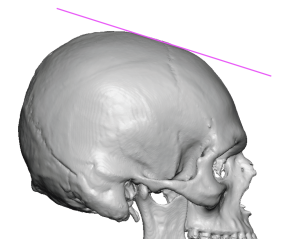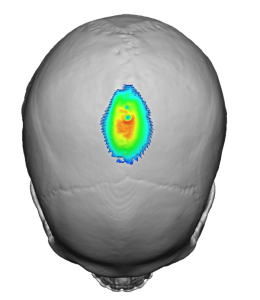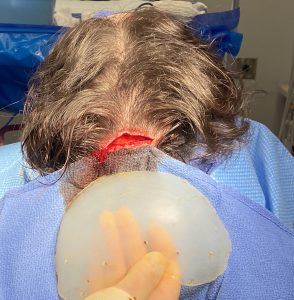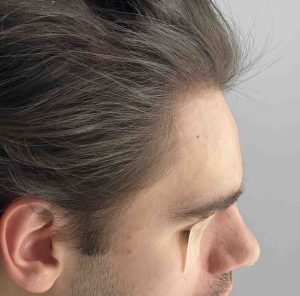Background: There are five surfaces to the skull, all having their own separate planes. The sides of the head have the most acute or well defined planes with a distinct obtuse angular separation. Two of the sagittal skull surfaces (top and back of the head) have a bit more curved surface distinctions. The forehead is unique due to its more vertical and flatter shape than either the back or top of the head. It makes a distinct transition onto the top of the head.
A straighter or more vertical forehead is generally perceived as aesthetically desirable whether it is in a man or woman. A sloping forehead occurs when there is a lack of any visible transition between the forehead and the top of the head. This creates a downward slope from the upper crown area on the back top of the head down into the forehead.
In treating the sloped forehead it is important to realize that it is not just a forehead problem. It is a much bigger skull problem that involves much of the top of the head which has to be factored into the solution.
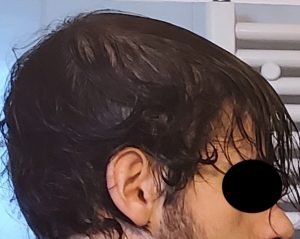
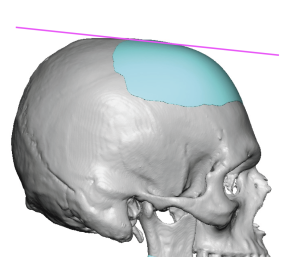
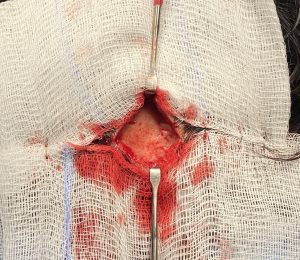
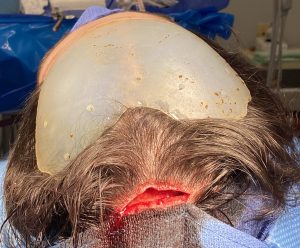

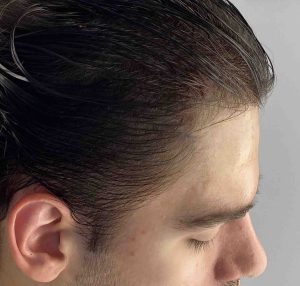
The transition between the forehead and the top of the skull is an important aesthetic one as it controls one important shape feature of the forehead. When the forehead has a backward slope it is associated with an underdevelopment of the top end of the skull. Thus to correct even a mild upper forehead slope, as in this case, the augmentation needs to go much further back onto the top of the skull than one would think for a smooth and natural shape.
Case Highlights:
1) A sloping forehead typically means that the transition between the forehead and the top of the skull is in a contiguous plane.
2) The forehead-skull slope is magnified if the posterior sagittal crest is elevated.
3) Changing the skull-forehead slope is ideally done by a posterior skull height reduction and a custom skull implant that adds anterior skull and upper forehead height.
Dr. Barry Eppley
Indianapolis, Indiana

